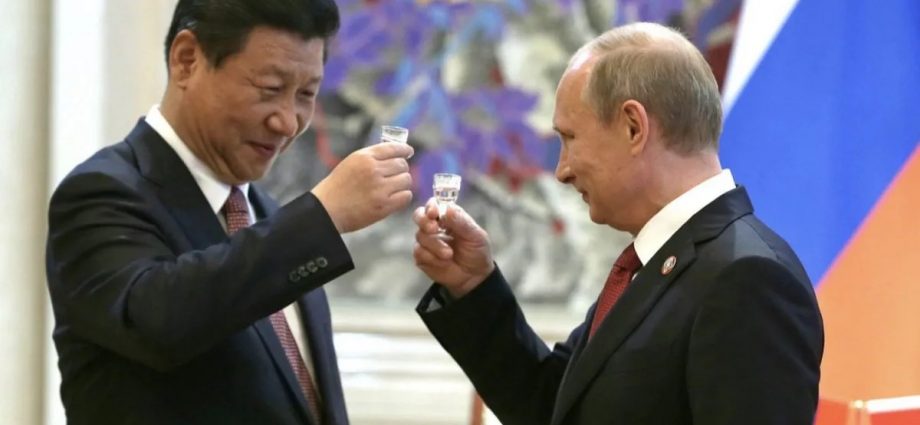
Last week, on the first anniversary of the Russian invasion of Ukraine, China issued a 12-point position paper outlining its “peace plan” for resolving the conflict. The document was released in the wake of statements by senior US officials, including Secretary of State Antony Blinken and the White House national security adviser, Jake Sullivan, warning that China is contemplating sending lethal weapons to Russia, a step it has avoided so far.
Western policymakers have not forgotten the joint statement issued by Chinese President Xi Jinping and Russian President Vladimir Putin in the weeks leading up to the invasion, in which they declared their “no-limit partnership.” The West’s chief concern is that the escalating rivalry with China has brought together two authoritarian countries hell-bent on reshaping the international order.
Chinese party-state media and pundits refute the claims. In contrast to Moscow’s rogue regime, Beijing’s worldview, in their opinion, supports the existing order because it has benefited the most from it.
They argue that the peace plan reflects China’s responsible and neutral stance throughout the conflict. Some even see it as a direct criticism of Putin, citing the emphasis on the inviolability of sovereignty, independence, and territorial integrity, as well as its clear support for a peaceful resolution and explicit opposition to nuclear brinkmanship.
For instance, retired Senior Colonel Zhou Bo of Tsinghua University debunked Western claims regarding Beijing’s pro-Russian stance: “China is not sitting out the conflict. If China had truly sided with Russia, World War III would have erupted. China’s greatest contribution has been to refuse to add fuel to the fire and to try to encourage peace talks.”
“Adding fuel to the fire” is the go-to Chinese expression for US and NATO military assistance to Ukraine. The phrase was used last Monday by Mao Ning, a spokeswoman for the Foreign Ministry, to accuse the US of prolonging and escalating the conflict by “pouring $32 billion worth of arms to one side” while making false allegations against China. “This is out-and-out hegemonism and double standard, and absolute hypocrisy,” she said.
In addition to offering nothing new to China’s position over the past year, nor a real roadmap or practical solutions, the Chinese plan appears to use Ukrainian hardship to further its own battle of narratives with the West – “Cold War mentality,” “exclusive security,” opposing military blocs, unilateral sanctions, and long-arm jurisdiction, and so on – such talking points can only be interpreted this way after years of Pavlovian conditioning on every possible Chinese platform.
Even the ostensibly responsible condemnation of the use of chemical and biological weapons is reminiscent of the Kremlin conspiracy theories that China’s propaganda arm has amplified regarding a purported US-Ukrainian bioweapons program.
Moreover, the peace plan’s stance against “pursuing one’s own security at the expense of others’ security” is straight out of the Kremlin playbook. According to Beijing, the invasion of a sovereign nation can be rationalized as a preventative measure to thwart NATO expansionism. It still eschews referring to the war as such, instead opting for the Russian euphemism “special military operation.”
Xi Jinping is currently planning a trip to Russia after speaking with Putin several times and meeting him in person in September. Meanwhile, Volodymyr Zelensky is still waiting for him to pick up the phone.
In contrast to Beijing’s claims, Chinese customs data show how local companies are assisting Russia’s war effort by exporting dual-use components, such as a double-digit increase in chip exports, a significant uptick in DJI drone exports, or a 400-fold increase in exports of aluminum oxide essential for weapons production.
Even if these numbers are disregarded, China-Russia trade last year reached a record US$190 billion, up 30% from the previous year. Behind the figures are European sanctions that allow China to purchase energy at a low cost while providing an economic lifeline to Russia. At the same time, Beijing’s humanitarian assistance to Kiev has been virtually nil.
Der Spiegel reported last week that a Chinese arms manufacturer is planning to send Russia 100 kamikaze drones by April, similar to the Iranian Shahad-136 unmanned aerial vehicles (UAVs) used by Russian forces to kill civilians in Kiev. China denies the accusations, but if lethal Chinese weapons are discovered to be destroying Ukrainian homes, Zhou Bo’s predictions of World War III will be more than mere conjecture.
In the end, China’s peace plan is just a smokescreen to shift the conversation away from Beijing and toward the US and its allies. Despite claims of objectivity and neutrality, its actions over the past year have made it abundantly clear that its top priority is narrow national interests, rather than playing the role of the “responsible major power” that it has envisaged for itself.
Its peace plan will remain empty rhetoric until it is ready to take concrete steps to support Ukraine’s sovereignty and territorial integrity. As Zelensky put it in his response to the Chinese peace plan, the question is what might follow Beijing’s words.
Any views expressed in this article, as well as any errors, are solely those of the author.

